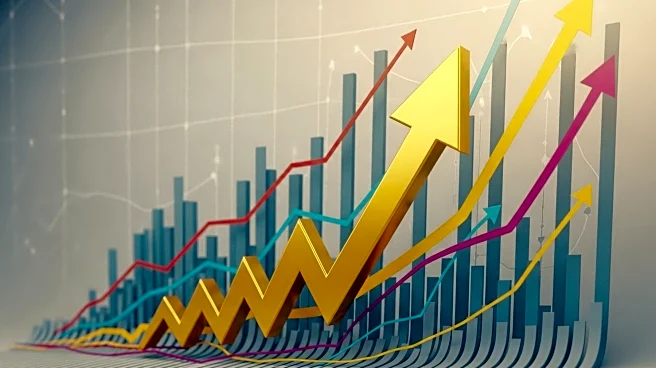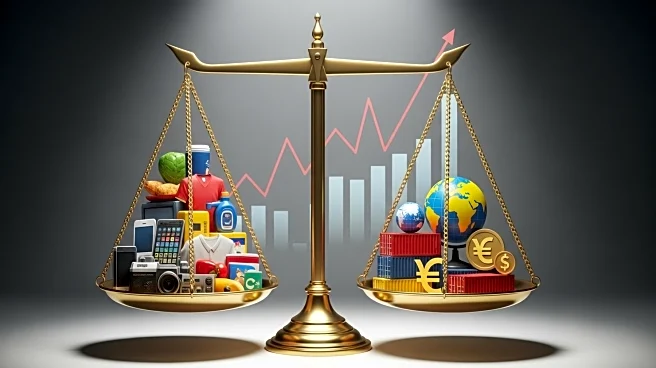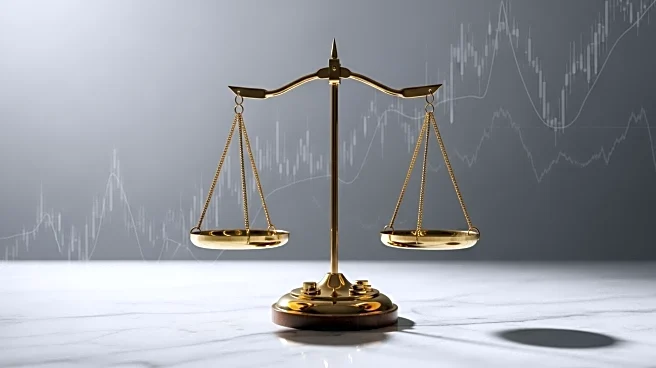What is the story about?
What's Happening?
The Labor Department has reported a significant decrease in initial claims for unemployment insurance, with filings totaling a seasonally adjusted 218,000 for the week ending September 20. This figure is notably lower than the Dow Jones consensus estimate of 235,000 and represents a drop of 14,000 from the previous week's revised numbers. Despite fears of labor market weakness, the data suggests that companies are hesitant to lay off workers, even as hiring rates have slowed. The report follows the Federal Reserve's recent decision to lower its benchmark borrowing rate, citing increased risks to employment. Additionally, the Commerce Department's latest GDP estimate shows a 3.8% growth in the second quarter, driven by consumer spending.
Why It's Important?
The decline in jobless claims is a positive indicator for the U.S. labor market, suggesting resilience despite broader economic concerns. This development may influence the Federal Reserve's monetary policy decisions, as it assesses the need for further rate cuts. The strong GDP growth and consumer spending figures highlight underlying economic strength, potentially alleviating fears of a slowdown. However, the labor market's stability is crucial for sustaining economic growth, as employment levels directly impact consumer confidence and spending. Stakeholders, including policymakers and businesses, will closely monitor these trends to gauge the economy's trajectory.
What's Next?
The Federal Reserve is expected to continue evaluating economic data to determine future policy actions. Market expectations suggest potential rate cuts in upcoming meetings, reflecting ongoing concerns about economic growth. Additionally, housing market improvements, with new home sales rising significantly, may contribute to economic stability. As the Fed navigates these dynamics, its decisions will be pivotal in shaping economic conditions and influencing business and consumer behavior. Stakeholders will watch for further developments in employment and spending patterns to assess the economy's resilience.
Beyond the Headlines
The recent economic data underscores the complexity of the current economic landscape, where positive indicators coexist with potential risks. The Federal Reserve's cautious approach reflects the need to balance growth with inflation control. The interplay between fiscal, regulatory, and geopolitical factors adds layers to economic decision-making. Long-term shifts in trade and immigration policies may also impact labor market dynamics, requiring adaptive strategies from businesses and policymakers. Understanding these multifaceted influences is essential for navigating future economic challenges.
AI Generated Content
Do you find this article useful?














